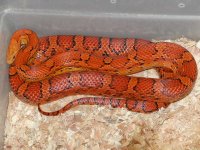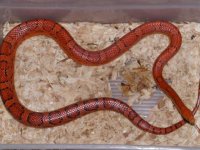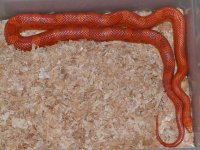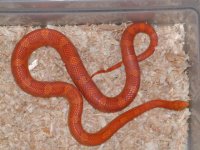Serpwidgets
New member
The kettle calls the saucer "black."It is clear from past posts that you are unable to acknowledge points of view that differ from your own regarding Okeetees:
Okeetee discussion
Another okeetee discussion
There is a world of difference between "disagree" and "don't acknowledge."
If you read those threads, you will clearly see that I'm saying there are multiple definitions. And the reason I give in both of those threads, and this thread, is that it's a matter of opinion and everyone has their own POV on the "look and feel" of the word and what it means to them. I not only acknowledge other points of view, they are the foundation of my entire argument about there being no single end-all definition of Okeetee.
In words, sure. It's easy to agree on something so blurry as "thick borders." But... make a 10 by 10 grid, with pictures of normals. As you go from left to right, the borders go from nonexistant to as bold as they get. As you go from top to bottom the ground color goes from gray to orange. Then ask 100 people "where would you draw a line between normal and Okeetee?" Some people might answer "from 3 across and 4 down" and others might answer "from 8 across, 8 down."Hmm. It seems that we are fairly consistent in our usage Serp.
The point is, we all have our own opinions of "how thick?" and since they differ, it's not right to assert that the place where you draw the line should be accepted by everyone else as "the law." That is what you're doing, and then you accuse me of not acknowledging anyone else's perspectives. The kettle calls the saucer black.
It's important to quote that in context. What I was disagreeing with is AggieTiff. He/she was arguing that a thin-bordered hypo Okeetee doesn't conform to the "okeetee look" idea. I followed that up with the comparison to Amel Okeetees. I stand by my statement.A point does needs to be clarified if we are to continue. In your last post you stated:
quote:
--------------------------------------------------------------------------------
”As far as the "look" thing, I also completely disagree.”
--------------------------------------------------------------------------------
Wind is a verb that means to turn something.Yet, this is from an older post by Serp:
quote:
--------------------------------------------------------------------------------
"As far as Okeetee being a locality, yes it is a locality. As far as Okeetee being a look, yes it is a look."….”Thus my assertion that they're equally valid.”
--------------------------------------------------------------------------------
So which is it?
Wind is a noun that means moving air.
So which is it? It's both. That's what I am saying and have been saying for a long time. Why do you insist that it has to be one or the other?
I said Okeetee is a subset of normal.In the post, I asked Joe:
quote:
--------------------------------------------------------------------------------
"if these "pure Okeetees" aren't from the Hunt Club and don't have broad, bold, black outlines because it is Hypo, why isn't it a Normal corn snake?"
--------------------------------------------------------------------------------
This is exactly the same as Serp saying that Okeetees are a variant of "normal"
You said a hypo is a normal. (?)
A hypo is not a normal. We aren't saying the same thing at all.
What I'm saying is that "Okeetee" is expanded by many people to be a subset of other morphs. For instance, Amel and Hypo. Amel modifies the "expected" look by removing the black, and hypo modifies the "expected" look by thinning/lightening the borders.
There is a consistent theme in all of my disagreements with people trying to say other people are misusing the term "Okeetee." I'm saying that you're "wrong" to assert that anything outside your narrow definition is inaccurate, or misrepresentation, or dishonest, or confusing the issue, or however you want to "paint" your argument. It all boils down to the same thing: you say it's "not Okeetee." Period. No matter how much you say, "I don't mean to get into locality definitions" the bottom line is that you are getting into locality definitions and asserting that the other person's definition is wrong.So that brings us to this quote from Serp:
quote:
--------------------------------------------------------------------------------
"he (CAV) turned around and clearly stated that his "definition" of "pure okeetee" is "the" definition, and Joe was "wrong" to use any other definition.
--------------------------------------------------------------------------------
Serp, I've documented that you and I use the exact same definitions. Doesn’t that mean that since I'm wrong, then we both are??
It's not an insinuation, it's an anology. Please read it in context.I greatly respect the depth of your genetics knowledge. You disagree with me and that is fine. However, I resent your insinuation that I said
quote:
--------------------------------------------------------------------------------
"I don't mean to say that you're stupid, but dude, you are totally stupid”
--------------------------------------------------------------------------------
Disagreeing with my opinions is one thing, misrepresentation them is another.




